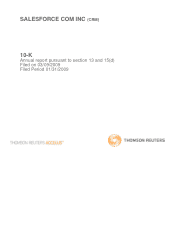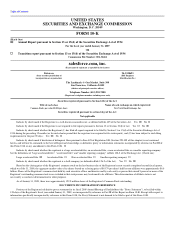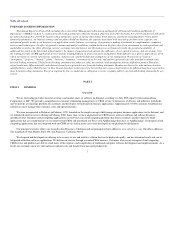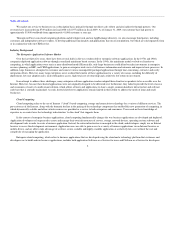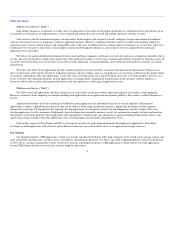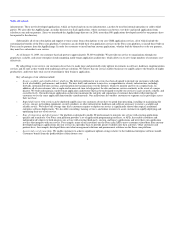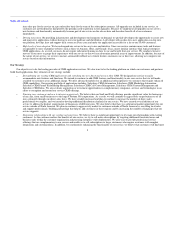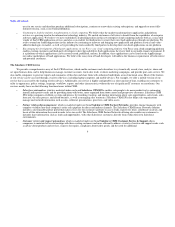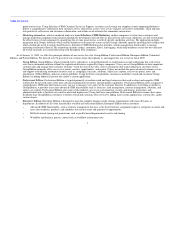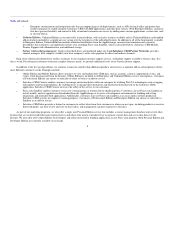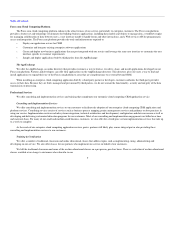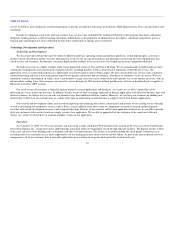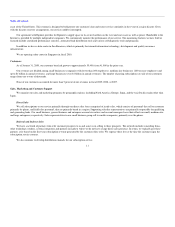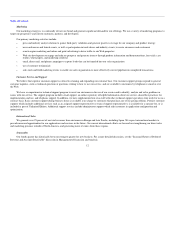Salesforce.com 2008 Annual Report Download - page 6
Download and view the complete annual report
Please find page 6 of the 2008 Salesforce.com annual report below. You can navigate through the pages in the report by either clicking on the pages listed below, or by using the keyword search tool below to find specific information within the annual report.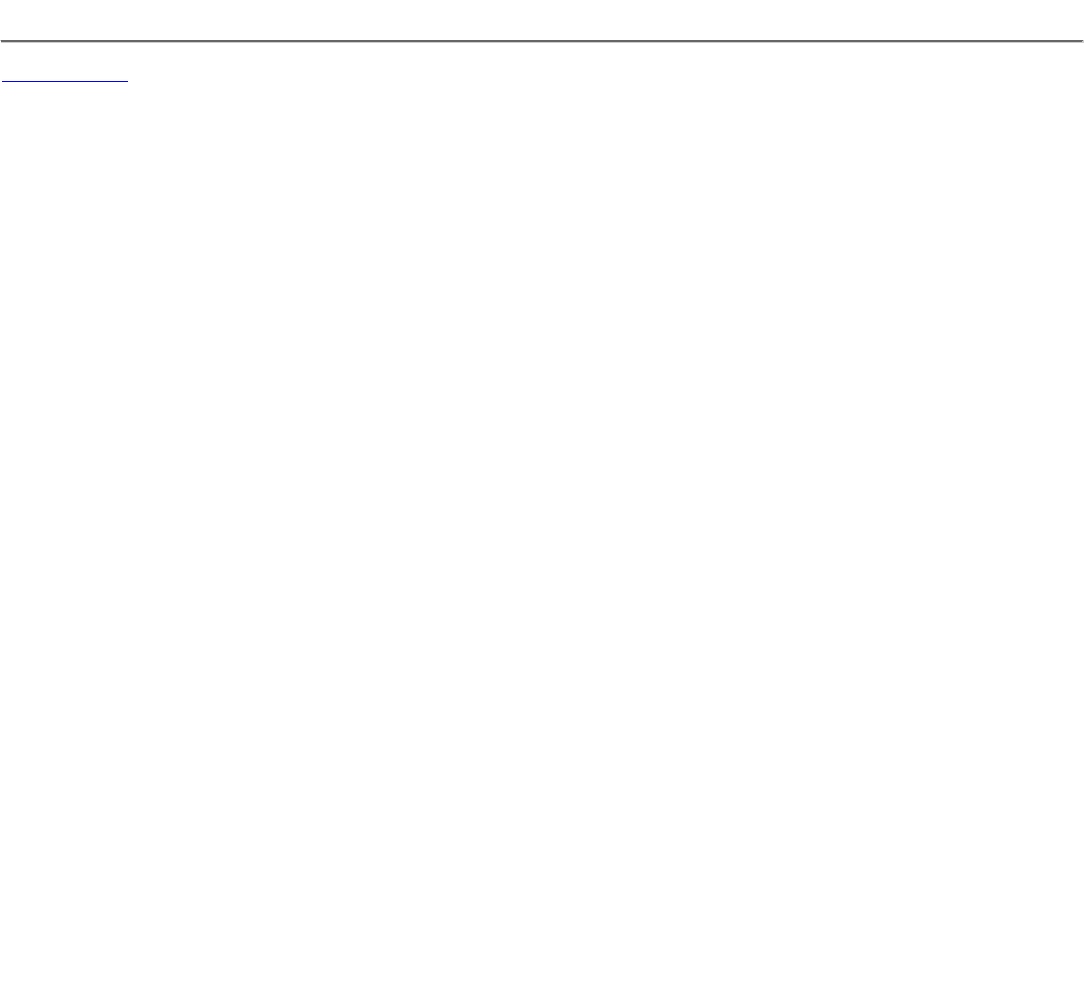
Table of Contents
Software-as-a-Service ("SaaS")
SaaS enables businesses to subscribe to a wide variety of application services that are developed specifically for, and delivered over, the Internet on an
as-needed basis with little or no implementation services required and without the need to install and manage third-party software in-house.
SaaS contrasts with the traditional enterprise software model, which requires each customer to install, configure, manage and maintain the hardware,
software and network services to implement a software application in-house. Moreover, traditional enterprise software vendors must maintain support for
numerous legacy versions of their software and compatibility with a wide array of hardware devices and operating environments. As a result, they either have
to dedicate fewer resources to innovation, or incur higher research and development expenses as a percentage of revenue compared with on-demand
application service providers.
We believe the market should not discriminate between small and large companies, and businesses of all sizes and across all industries should be able to
use the same software based on a multi-tenant architecture. This architecture enables us to leverage a common infrastructure and software code base across all
customers who benefit from access to the most current release of the application, automated upgrades, more rapid innovation and the economies of a shared
infrastructure.
We believe the shift to SaaS applications provides significant benefits even beyond those associated with multi-tenant infrastructure. Businesses are
able to realize many of the benefits offered by traditional enterprise software vendors, such as a comprehensive set of features and functionality and the ability
to customize and integrate with other applications, while at the same time reducing the risks and lowering the total costs of owning enterprise software. As a
result, we believe the continued emergence of SaaS applications is bringing about a fundamental transformation in the enterprise software industry as
businesses will be able to replace their purchased software with subscriptions to a wide range of application services.
Platform-as-a-Service ("PaaS")
We believe that SaaS applications and their related success in the market are the most widely understood segment of enterprise cloud computing.
However, enterprise cloud computing also includes building SaaS applications on an application development platform. This market is called Platform-as-a-
Service.
Application developers use PaaS technology to build both custom applications for individual businesses or vertical industries and horizontal
applications to address standard business processes that can be sold to a broad range of potential customers. Application developers include corporate
information technology (IT) departments that typically develop applications for a company's internal use and independent software vendors (ISVs) that
develop applications to sell to customers. Traditionally, these developers have needed to purchase, install, test and maintain complex software and hardware
infrastructure to develop and deliver their applications. This requirement resulted in more time and resources spent maintaining infrastructure and less time
and resources being available to develop applications, with a resulting impact on innovation and productivity levels.
PaaS enables corporate IT developers and ISVs to leverage the benefits of a multi-tenant platform for developing new applications. PaaS allows
developers to build applications with a browser and an Internet connection, just as SaaS allows users to use applications through a browser.
Our Solution
Our flagship Salesforce CRM applications, which were initially introduced in February 2000, help companies better record, track, manage, analyze and
share information regarding sales, customer service and support, and marketing operations. Our Force.com cloud computing platform, which was introduced
in 2007, allows customers and partners to more extensively customize and integrate Salesforce CRM applications or build entirely new SaaS applications
beyond CRM without having to invest in new software, hardware and related
3

